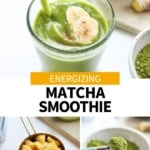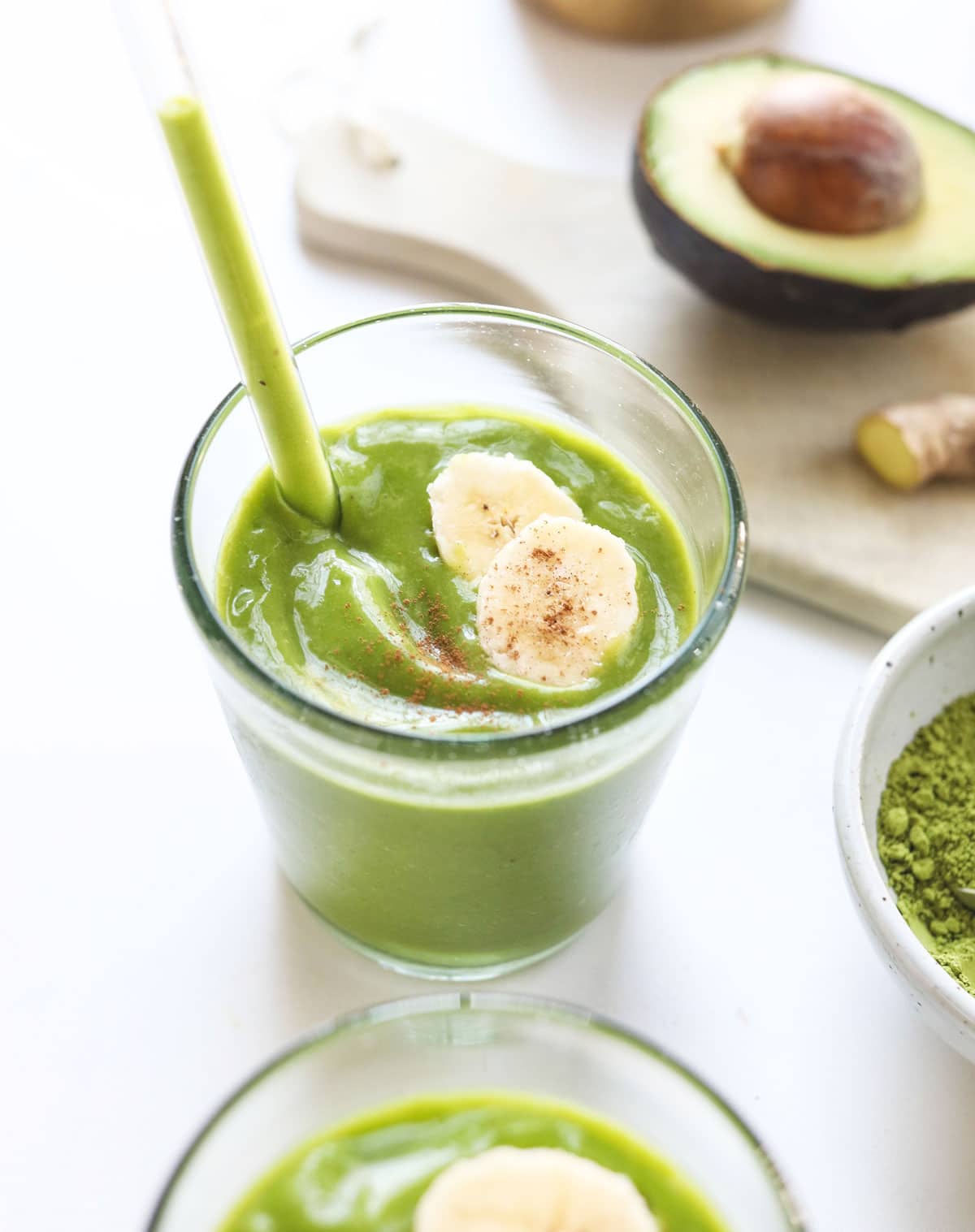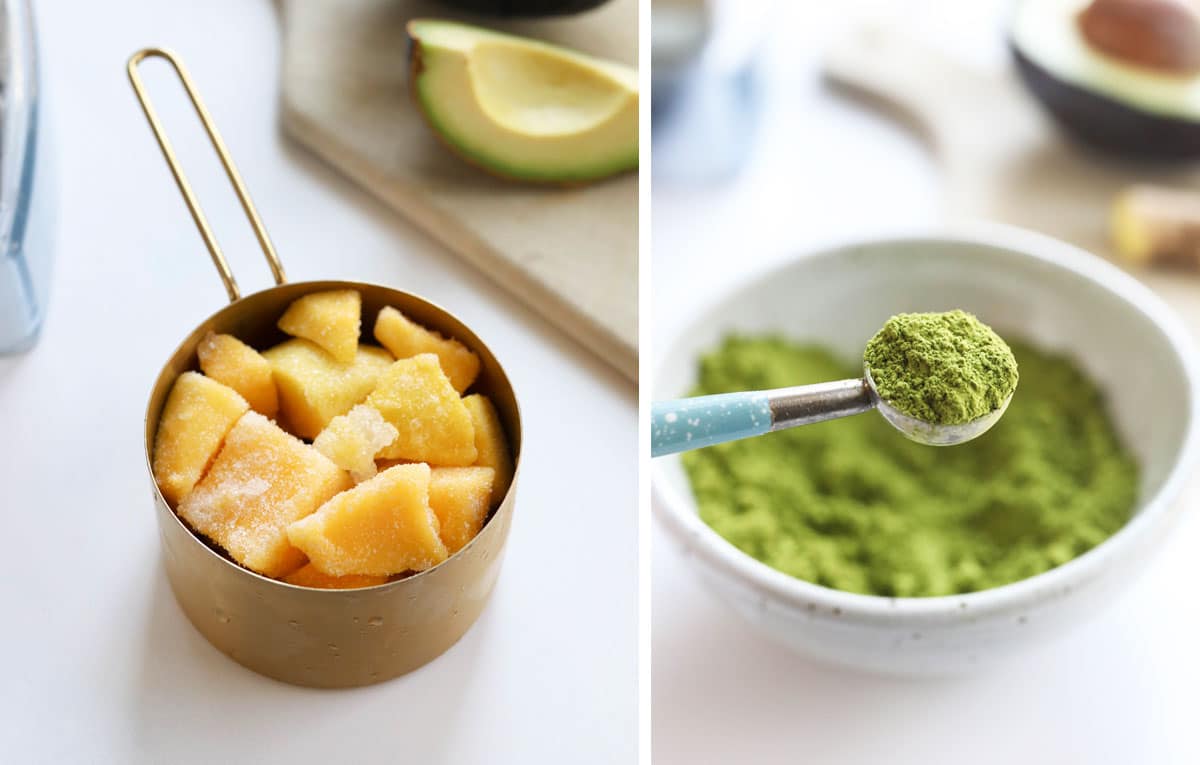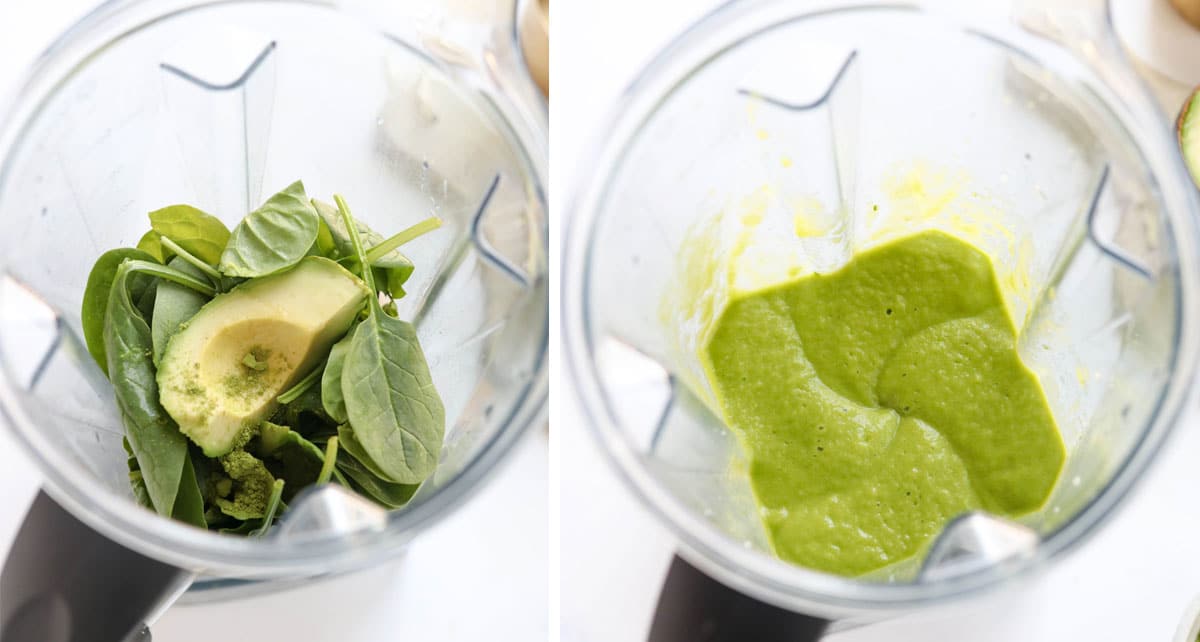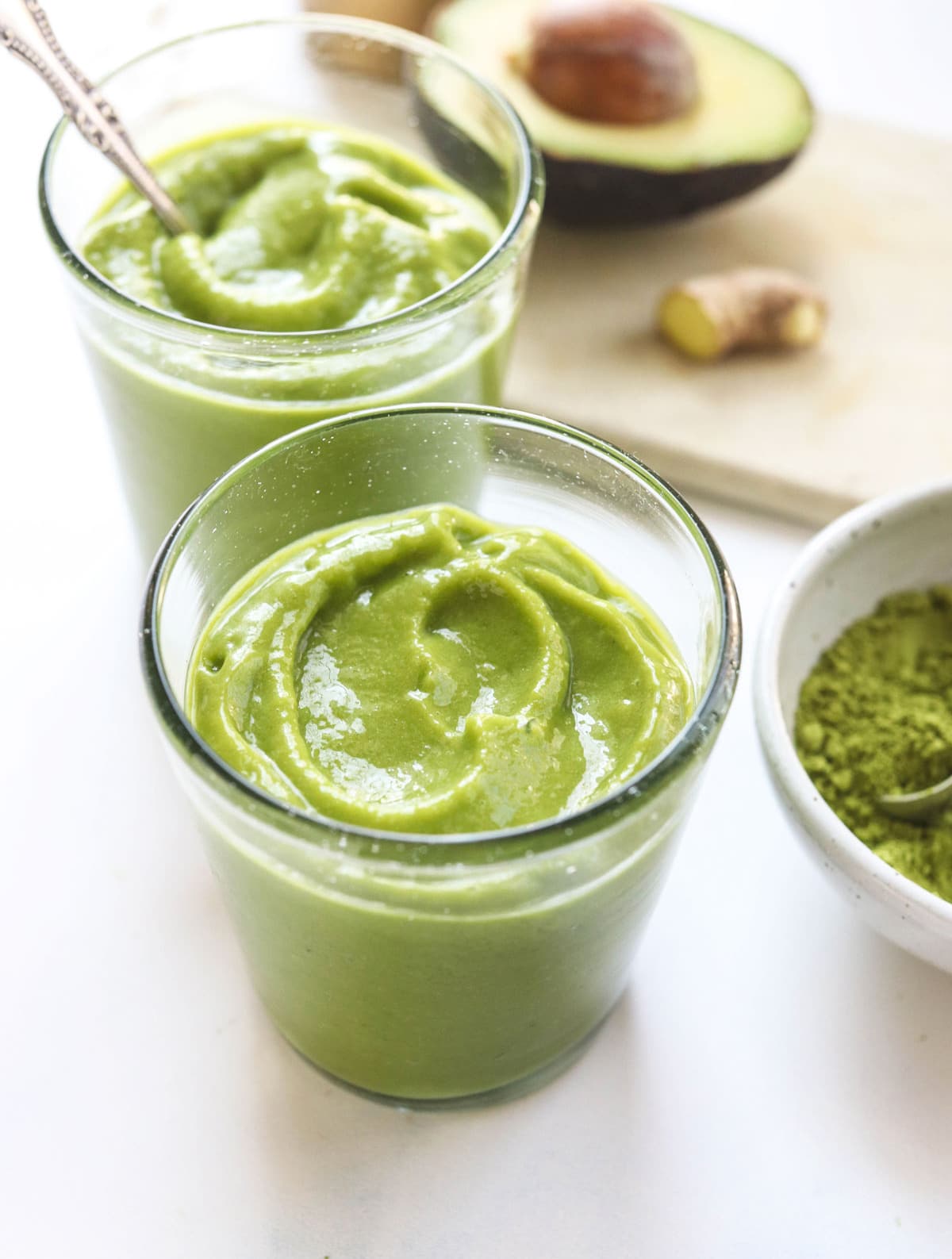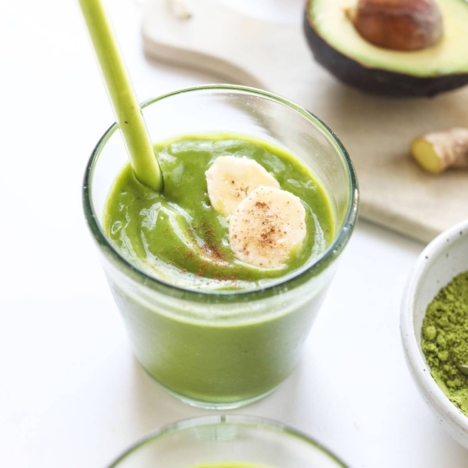Benefits of Matcha
Unlike traditional green tea, which is steeped in water, matcha is made from ground green tea leaves— so the whole leaf is consumed. This makes it high in antioxidants, and gives it a stronger “green tea” flavor when you drink it. Here’s why I love matcha:
It’s rich in catechins, which are thought to act as antioxidants. According to this study, matcha has at least 3 times the catechins compared to other varieties of green tea. Green tea may help promote liver health! In a review of 15 studies, drinking green tea has been associated with a lower risk of liver disease. It may aid in brain health. In one small study, 2 grams of green tea powder was shown to boost brain activity in older participants in 3 months. Green tea extract may help to slow the growth of cancer cells. In a rat study, green tea extract was shown to slow tumor growth of breast cancer, and in test tube studies the ECGC in matcha may help with lung cancer and skin cancer, too.
What I love about matcha is that you don’t have to wait for it to steep like traditional green tea. You can drink it as soon as it’s cool enough to handle. (Try my 3-minute Matcha Latte for a fast morning option!)
Which Fruit Goes Well with Matcha?
Matcha has a strong flavor when you serve it as a latte, but it’s pretty mild when you add it to a smoothie, so your options are wide open! Here’s what I’ve tried with this blend so far:
Frozen bananas Mango chunks Pineapple Ginger (adds a nice pop of spice!) Frozen blueberries Dates (for a neutral flavor)
If you add an ingredient that has a very strong flavor, like orange juice or raspberries, you won’t be able to taste the matcha at all. So keep that in mind! As written, this recipe has a very mild flavor, because I like to keep the caffeine content low.
How Much Caffeine is in a Matcha Smoothie?
You are in total control of how much caffeine goes into this smoothie. A 1/2 teaspoon of matcha powder has roughly 30-35mg of caffeine, which is about the same amount you’d get by drinking an 8 oz. cup of green tea. For reference, the average cup of brewed coffee has about 95mg of caffeine. You can add more or less caffeine by adjusting the amount of matcha that you use in your smoothie. Make sure you check the nutrition label on your matcha package if you need to monitor the amount closely.
As written, this recipe makes a slightly thick smoothie with an ice-cream like texture when you use frozen fruit. If you use fresh fruit, make sure to use less liquid so it won’t be too runny. If you try this recipe, please leave a comment below letting me know how you like it! And if you make any modifications, please let me know how that turns out for you, too. We can all benefit from hearing about your experience. – Reader Feedback: What’s your favorite way to use Matcha? Be sure to try my Matcha Cookies if you haven’t yet!
